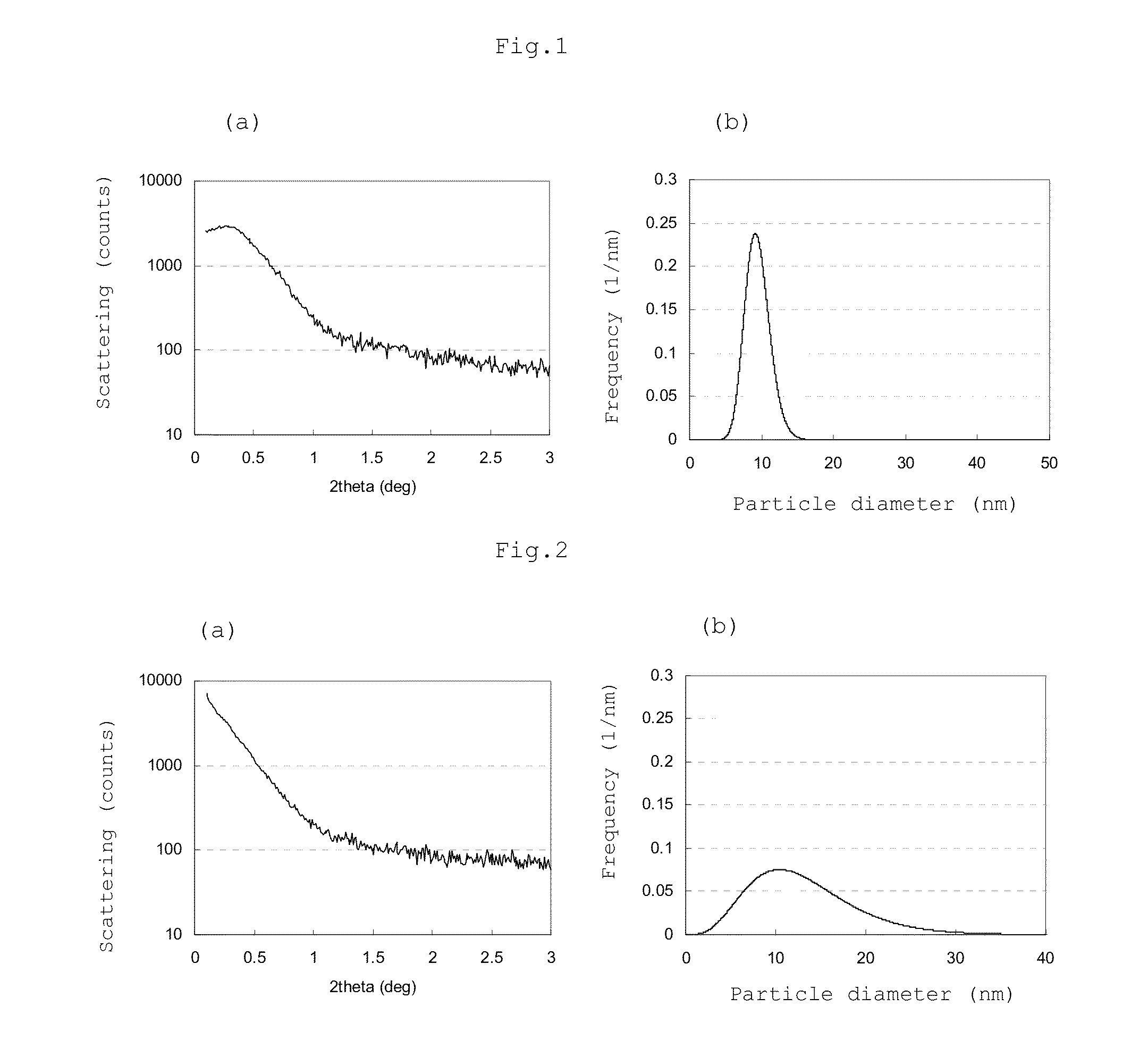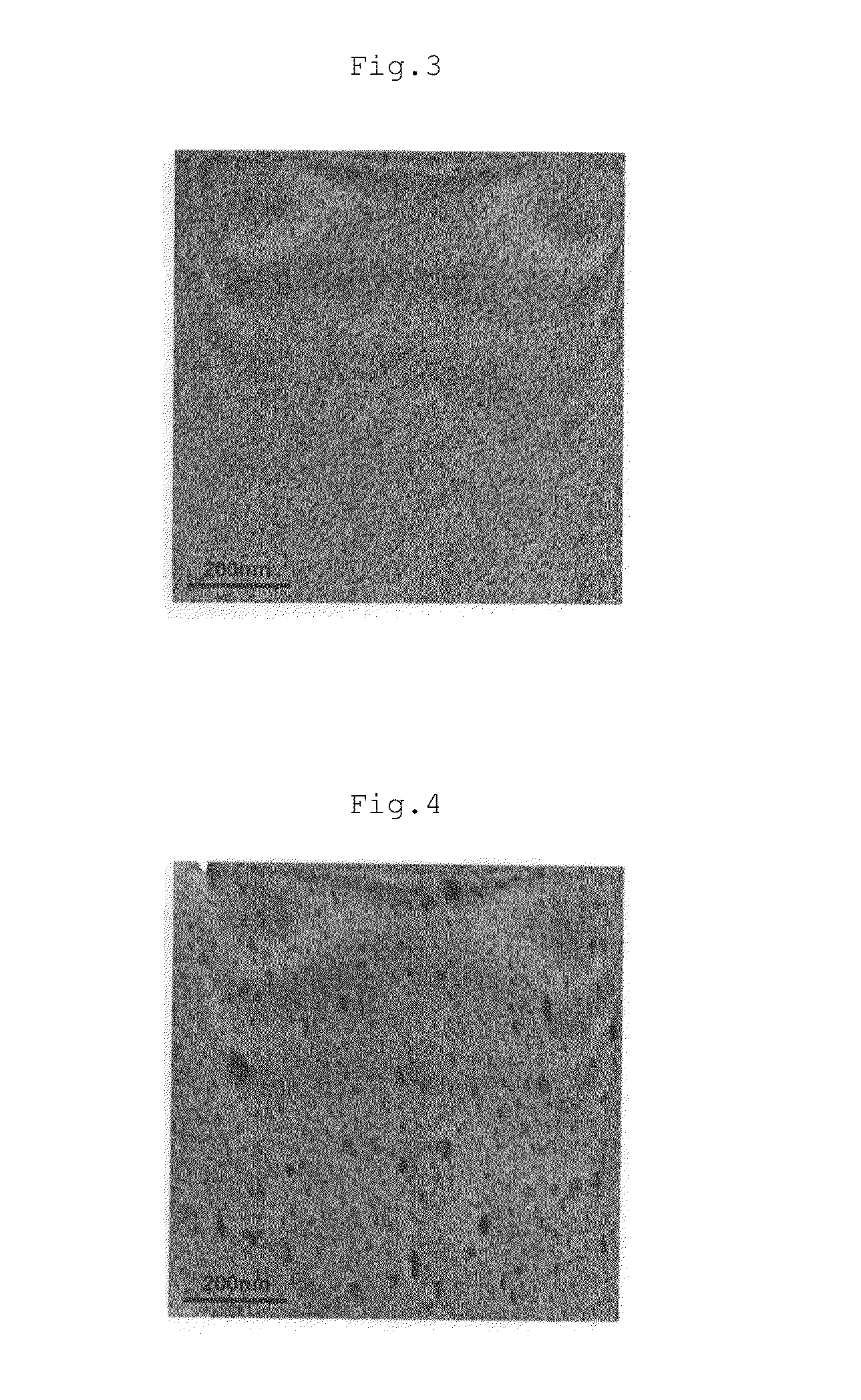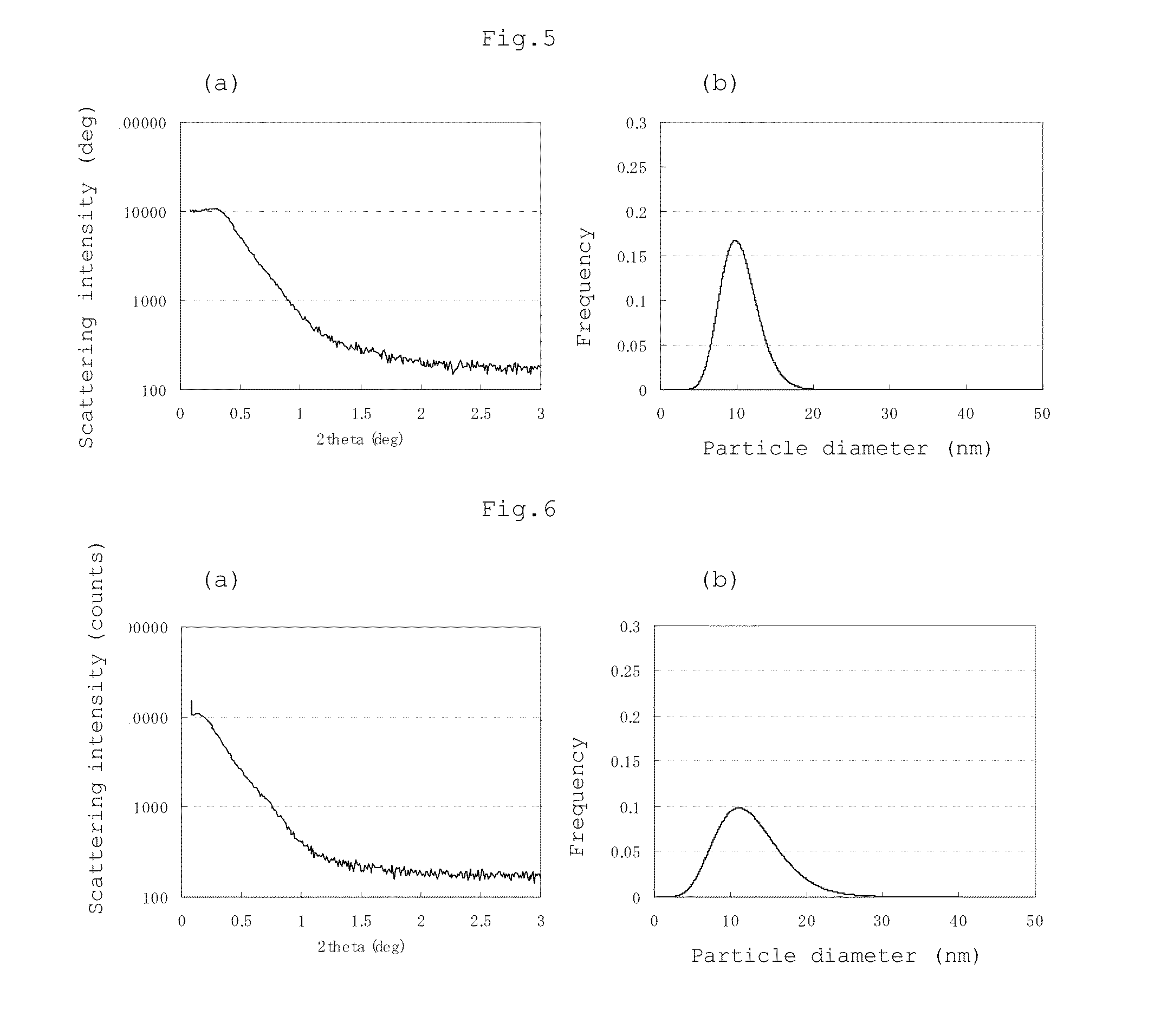Polycarbonate-polydiorganosiloxane copolymer
a polycarbonate and polyorganosiloxane technology, applied in the field of polycarbonatepolydiorganosiloxane copolymer, can solve the problems of high total light transmittance and low haze, the transparency of the polycarbonate-polydiorganosiloxane copolymer obtained by this production process cannot reach the high level required for transparent resins, etc., to achieve high transparency and improve the transparency of the polycarbonate-
- Summary
- Abstract
- Description
- Claims
- Application Information
AI Technical Summary
Benefits of technology
Problems solved by technology
Method used
Image
Examples
example 1
Step (i)
[0222]21,592 parts of ion exchange water and 3,675 parts of a 48.5% sodium hydroxide aqueous solution were fed to a reactor equipped with a thermometer, stirrer and reflux condenser, 3,897 parts (17.07 moles) of 2,2-bis(4-hydroxyphenyl)propane (bisphenol A) as the dihydric phenol (I) represented by the formula [4] and 7.6 parts of hydrosulfite were dissolved in the resulting solution, 14,565 parts (10 moles based on 1 mole of the dihydric phenol (I)) of methylene chloride was added to the obtained solution, and 1,900 parts of phosgene was blown into the reactor under agitation at 22 to 30° C. over 60 minutes. The average oligomer polymerization degree was 1.85.
Step (ii)
[0223]A solution prepared by dissolving 1,131 parts of a 48.5% sodium hydroxide aqueous solution and 108 parts of p-tert-butylphenol in 800 parts of methylene chloride was added to the above solution, and a solution prepared by dissolving 205 parts (0.067 mole) of a polydiorganosiloxane compound (X-22-1821 of ...
example 2
[0227]The procedure of Example 1 was repeated except that 3,880 parts of 2,2-bis(4-hydroxyphenyl)propane was used and a solution prepared by dissolving 430 parts of the dihydric phenol (II) represented by the formula [5] in 1,600 parts of methylene chloride was added to ensure that the addition rate of the dihydric phenol (II) became 0.0008 mole / min based on 1 mole of the dihydric phenol (I). The average oligomer polymerization degree in the step (i) was 1.88. The measurement results are shown in Table 1.
[0228]The structural viscosity index (N) of the obtained polycarbonate-polydiorganosiloxane copolymer was 1.63. The flame retardancy rating was V-1 and the number of times of melt dripping of each of the five test specimens was 0.
example 3
[0229]The procedure of Example 1 was repeated except that 3,860 parts of 2,2-bis(4-hydroxyphenyl)propane was used and a solution prepared by dissolving 681 parts of the dihydric phenol (II) represented by the formula [5] in 2,400 parts of methylene chloride was added to ensure that the addition rate of the dihydric phenol (II) became 0.0012 mole / min based on 1 mole of the dihydric phenol (I). The average oligomer polymerization degree in the step (i) was 1.80. The measurement results are shown in Table 1.
PUM
| Property | Measurement | Unit |
|---|---|---|
| size | aaaaa | aaaaa |
| total light transmittance | aaaaa | aaaaa |
| haze | aaaaa | aaaaa |
Abstract
Description
Claims
Application Information
 Login to View More
Login to View More - R&D
- Intellectual Property
- Life Sciences
- Materials
- Tech Scout
- Unparalleled Data Quality
- Higher Quality Content
- 60% Fewer Hallucinations
Browse by: Latest US Patents, China's latest patents, Technical Efficacy Thesaurus, Application Domain, Technology Topic, Popular Technical Reports.
© 2025 PatSnap. All rights reserved.Legal|Privacy policy|Modern Slavery Act Transparency Statement|Sitemap|About US| Contact US: help@patsnap.com



